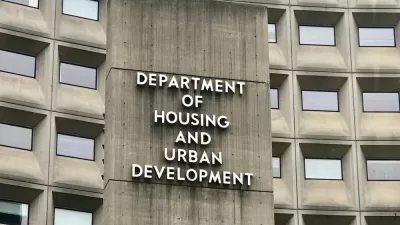An interview with a leading academic on the subject of fair housing offers perspective on the new Affirmatively Furthering Fair Housing rule created by the Department of Housing and Urban Development.
Elias Isquith interviews Paul Jargowsky—professor of public policy at Rutgers University and the author of Poverty and Place: Ghettos, Barrios, and the American City—about the historical significance of the new fair housing rules produced by the Department of Housing and Urban Development (HUD).
Jargowsky calls on his experience working with the Clinton Administration and HUD to generate methods for affirmatively furthering fair housing. His conclusion: the new rules are long overdue in the effort to end segregation.
An example of the exchanges and arguments of the interview:
Is the administration endorsing any view or theory of segregation in particular with this plan? Or is it more of a grab-bag of ideas?
I don’t see that as endorsing or coming from a particular point of view about the sources of racial segregation, but I think it’s quite clear that at least partly it’s driven by the pattern of existing housing. If you look at how housing has been constructed, and I’m talking both private market and subsidized housing, over the last decade, that provides a framework within which people have to find their units. If we’re talking about a group of African Americans, who on average have much lower income than whites, if the housing they can afford is all within either the central cities or the older inner ring suburbs, that’s going to be a constraint on the ability to reduce segregation.
FULL STORY: “It’s really long overdue”: Why Obama’s new anti-segregation rules are coming decades late

Maui's Vacation Rental Debate Turns Ugly
Verbal attacks, misinformation campaigns and fistfights plague a high-stakes debate to convert thousands of vacation rentals into long-term housing.

Planetizen Federal Action Tracker
A weekly monitor of how Trump’s orders and actions are impacting planners and planning in America.

In Urban Planning, AI Prompting Could be the New Design Thinking
Creativity has long been key to great urban design. What if we see AI as our new creative partner?

San Francisco Mayor Backtracks on Homelessness Goal
Mayor Dan Lurie ran on a promise to build 1,500 additional shelter beds in the city, complete with supportive services. Now, his office says they are “shifting strategy” to focus on prevention and mental health treatment.

How Trump's HUD Budget Proposal Would Harm Homelessness Response
Experts say the change to the HUD budget would make it more difficult to identify people who are homeless and connect them with services, and to prevent homelessness.

The Vast Potential of the Right-of-Way
One writer argues that the space between two building faces is the most important element of the built environment.
Urban Design for Planners 1: Software Tools
This six-course series explores essential urban design concepts using open source software and equips planners with the tools they need to participate fully in the urban design process.
Planning for Universal Design
Learn the tools for implementing Universal Design in planning regulations.
Gallatin County Department of Planning & Community Development
Heyer Gruel & Associates PA
JM Goldson LLC
Mpact (founded as Rail~Volution)
City of Camden Redevelopment Agency
City of Astoria
Jefferson Parish Government
Camden Redevelopment Agency
City of Claremont





























